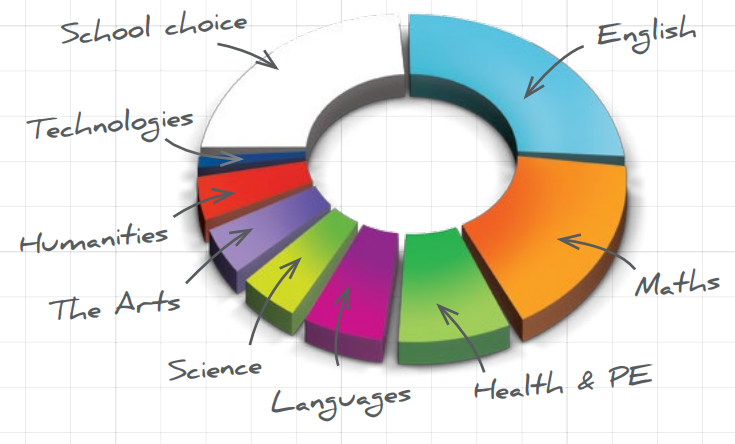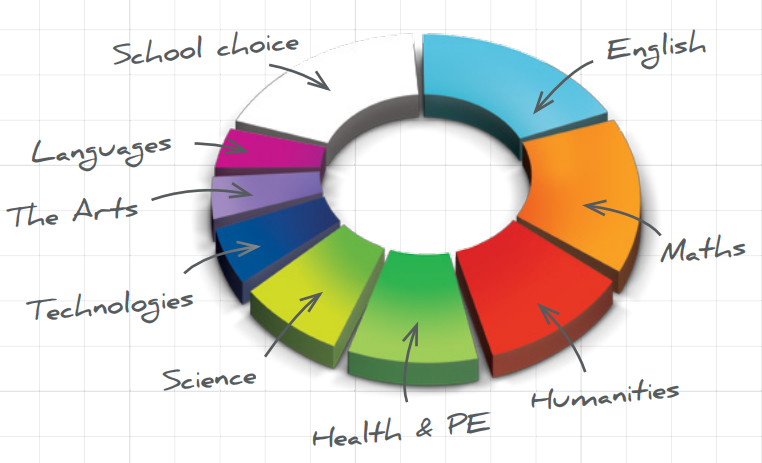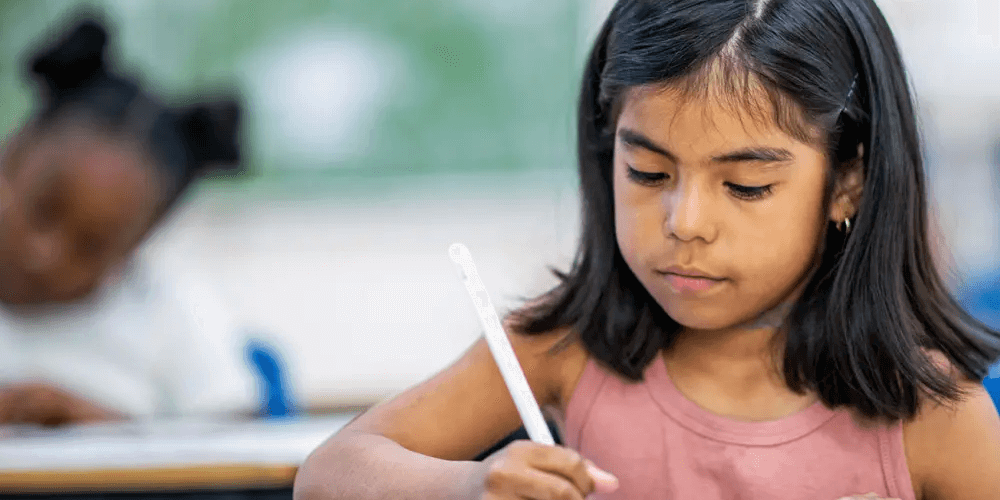Have you ever wondered what goes on in each school year? Hope Tutoring’s Guide to the Primary School Years is designed to provide you with a concise overview of the key numeracy and literacy skills children will develop in each year of primary school from educational expert, Justin Clark.
Early Stage of Learning
Prep and Years One and Two Distribution of Learning Areas

Prep
Starting age: 4.5 – 5.5 years
Prep is the first year of school for Australian children. In Queensland, it was introduced in 2007 and became compulsory in 2017. It’s called the ‘foundation year’ of schooling, as its aim is to arm children with a strong foundation of learning which can be built upon in the future years. Prep learning is heavily play-based and enquiry-based to develop a positive approach to learning and foster curiosity and confidence.
There are usually many imaginative opportunities available to children in prep, with structured play in things like playhouses or play kitchens, with dress-ups, blocks and puppets being incorporated every day.
Children will learn to recognise and write letters and numbers, begin learning to read with sounding-out skills and sight words, and work on writing familiar words, like their name. Counting is introduced, as well as the ideas of size (greater or smaller than) and shapes. They’ll develop their physical abilities, like gross and fine motor skills and will practice important social skills like turn-taking and reciprocal conversation.
Year One
In year one, your child’s classroom will start to look a little more conventional. There is likely to be a reading corner with bookshelves, cushions and bean bags, while the toy shelves and designated play spaces will usually be phased out.
Priority is still placed on literacy and numeracy development in year one, with these skills being integrated throughout other learning areas like science, humanities and technology.
Children will develop readable handwriting, learn to spell basic words and start to write in sentences, becoming familiar with basic punctuation, like capital letters and full stops. Recounting is a key skill in this year, with children often asked to re-tell stories or experiences.
Number facts are introduced in year one, as are the numerical symbols for addition and subtraction, with rainbow facts (number facts that add to 10) being a key focus. Vocabulary such as ‘plus’ and ‘take away’ replaces ‘comes after’ and ‘comes before’.
Year Two
Year two is the first year of school for Australian children where there is a marked shift from play-based learning to a more traditional learning structure.
While parents have probably gotten used to readers being sent home, formal homework will now be introduced, with the grid format being common in many schools. Homework is designed to support children’s literacy, numeracy and emotional development, and will typically include spelling words, number facts and ‘personal development’ tasks, like helping out their parents with a chore, doing something kind, doing something active or playing with a family pet.
In year two, a focus is placed on reading comprehension and understanding of texts, not just the reading itself. More complex phonics and grammar are incorporated, and independent reading skills will grow in leaps and bounds.
In maths, operations with double-digit numbers become common, and children will learn to count money, tell the time in digital and analogue format, use a calendar to tell the date, use units to measure objects and decipher number sequences.
Second Stage of Learning
Years Three and Four Distribution of Learning Areas

Year Three
For many children, year three is the year when they develop a true sense of independence and become confident learners. It is the first year in which most children participate in the standardised NAPLAN test, and whether you focus on it or not, you’re probably going to be hearing about it frequently.
Spelling and grammar rules become more prominent this year, with a focus on accuracy and different sentence types. Parts of speech will be introduced to support this learning. Students will learn to recognise and write texts with different purposes, like narratives, expositions and reports, and the idea of planning a text before writing it is introduced.
Times tables are the major mathematic milestone in year three and they form the basic of much of their numeracy work. They’ll now be able to perform four numerical operations; addition, subtraction, multiplication and division. Students will place numbers and fractions on a number line, perform calculations with time and money, be introduced to reading maps and learn about symmetry.
Year Four
Year four is one of the most exciting, and potentially nerve-wracking, primary school years for many, as most students go on an overnight camp for the first time. Children will develop maturity and be given more choices in the classroom.
In English, students will be able to write confidently using simple and compound sentences, with mostly accurate spelling and grammar. Descriptive writing, often centring around the different senses, is a major focus in year four, as children are encouraged to add complexity to their writing. They’ll be introduced to the idea of independent research and will get to design their own projects and presentations, developing technological skills as well.
Multiplication and division facts will be solidified in year four, as well as exploring number patterns involving these skills. Children will be asked to ‘explain their working or how they got their answer’ and will be encouraged to think critically about how to solve different problems, particularly ‘word questions’. They’ll measure time, distances, shapes, angles and objects, learn to construct and interpret graphs and be introduced to probability.
Third Stage of Learning
Years Five and Six Distribution of Learning Areas

Year Five
Year five is often called the ‘break year’ or the ‘calm year’, where students have the chance to really solidify their prior learning before they become the seniors of the school. NAPLAN is back again, and it is likely that the preparatory work will be ramped up, as most schools feel year five students are mature enough to handle more concrete vocabulary around tests. This can cause increased stress for many students in the first half of the year, so its something to be aware of.
Literary techniques such as similes and metaphors will be learnt this year, with students being able to identify these techniques in texts and use them in their own writing. They’ll begin to think critically about language and vocabulary choices, and learn how to chose words for a specific purpose. Vocabulary development fuelled by reading widely is a major feature of year five, as students’ writing matures and they learn to use complex sentences with independent and dependent clauses.
In year five mathematics, students will learn to perform operations with fractions and decimals and be able to create, describe and continue sequences with whole numbers, fractions and decimals. Their measurement understanding will expand greatly this year, as they learn to measure length, perimeter, area, volume, capacity and mass, and calculate the perimeter and area of shapes. Probability becomes a more concrete concept in year five, with students listing outcomes of events and their chance of occurring, typically with situations like spinners and dice.
Year Six
Year six is the final year of primary school, where students get to enjoy leadership roles such as captaincies and buddy systems, and experience the excitement of graduation for the first time. This year, students will be pushed to develop independence and self-motivation, skills that will aid them in their transition to high school in the next year.
In English, students begin to explain how and why authors organise their texts. The idea of giving evidence is introduced, and students learn about quoting and rephrasing information to be able to explain their own ideas when analysing, explaining and comparing pieces of writing
Simple algebra is introduced in year six mathematics, as are negative numbers, which children will be expected to be able to place on a number line. Their statistical understanding and interpreting skills will develop, with students learning to construct, explain and analyse more complex graphs and data sets. Their ability to compute calculations with time will also be built upon, with 12 and 24 hour time featuring in problems, as well as the reading of timetables and different time zones. In preparation for high school, a focus is placed on explaining their mental strategies and showing how they worked problems out.
At Hope Tutoring we specialise in tutoring students with learning difficulties. Contact us today if you are looking for Brisbane tutoring services or someone who can do remote tutoring.


